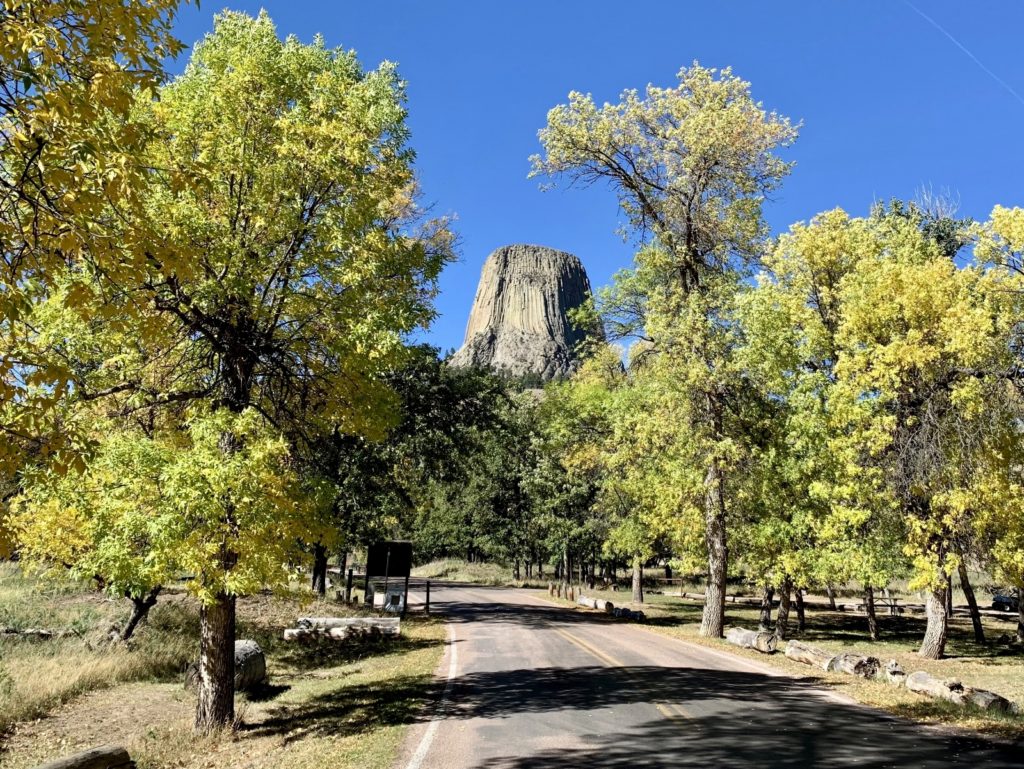
During our Fall 2021 adventures, we visited Devils Tower National Monument. The Tower is a massive rock monolith that towers 1,267 feet above the Belle Fourche River and plains of Northeast Wyoming. Standing 867 feet tall from base to summit, it is considered sacred by Northern Plains Indians and is one of the finest rock climbing areas in North America. Devils Tower was America’s first National Monument, established on September 24, 1906 by one of my favorite presidents, Theodore Roosevelt.
Logistics

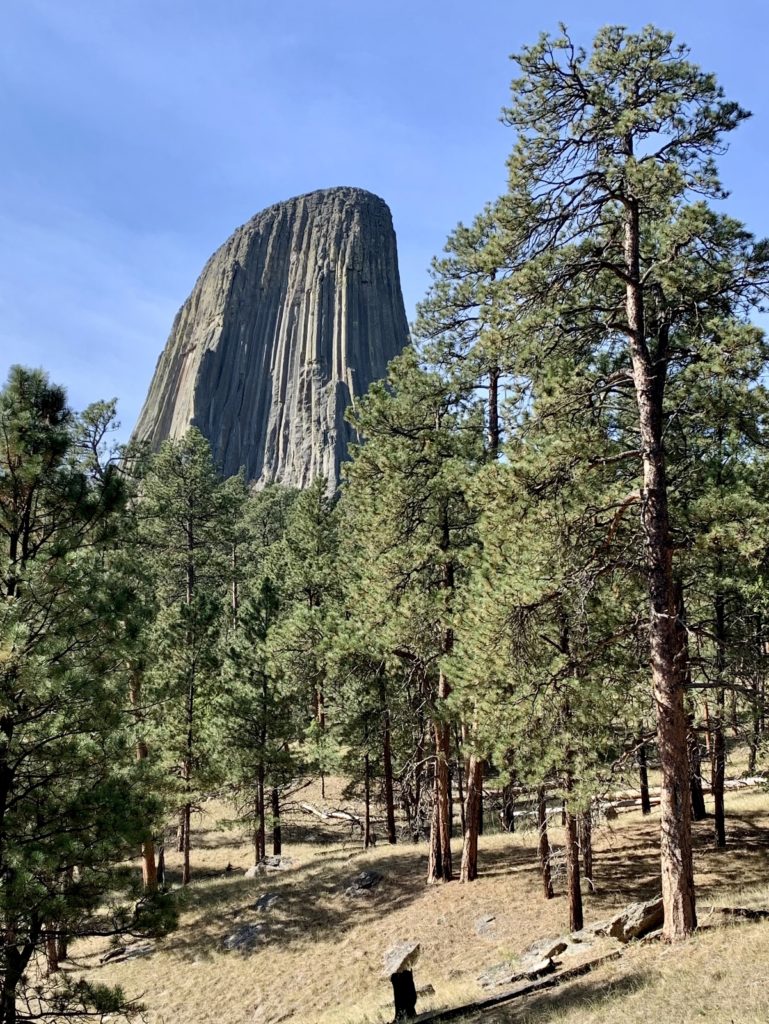

Devils Tower National Monument is located 33 miles northeast of Moorcroft, 27 miles northwest of Sundance, and 52 miles southwest of Belle Fourche, SD. If approaching from the east or west, take US Hwy 14 to WY 24 (follow the signs from I-90). If approaching from the north, take WY 112 to WY 24 (from Montana) or SD 34 / WY 24 (from South Dakota). It is open 24 hours a day, 365 days a year; however, facilities such as the visitor center have seasonal hours that can be found here.
Standard entrance fee for a vehicle is $25 for a one week pass. I highly recommend purchasing the $80 America the Beautiful Annual Pass which provides access to Federal recreation sites for one year. Active duty military, veterans, and Gold Star Families qualify for a free Annual Military Pass.
Visitation to the park averages 500,000 visitors per year with 80% coming between Memorial Day and Labor Day. Parking at the visitor center is limited and the park often experiences maximum parking capacity for several hours every day in the summer and on fall weekends. I recommend going early or late in the day.
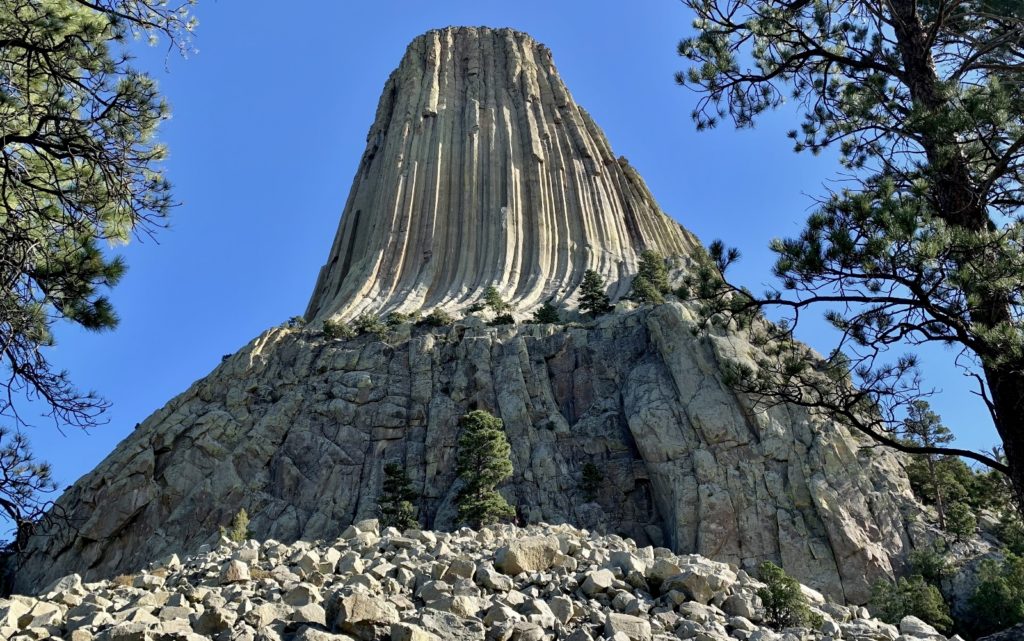
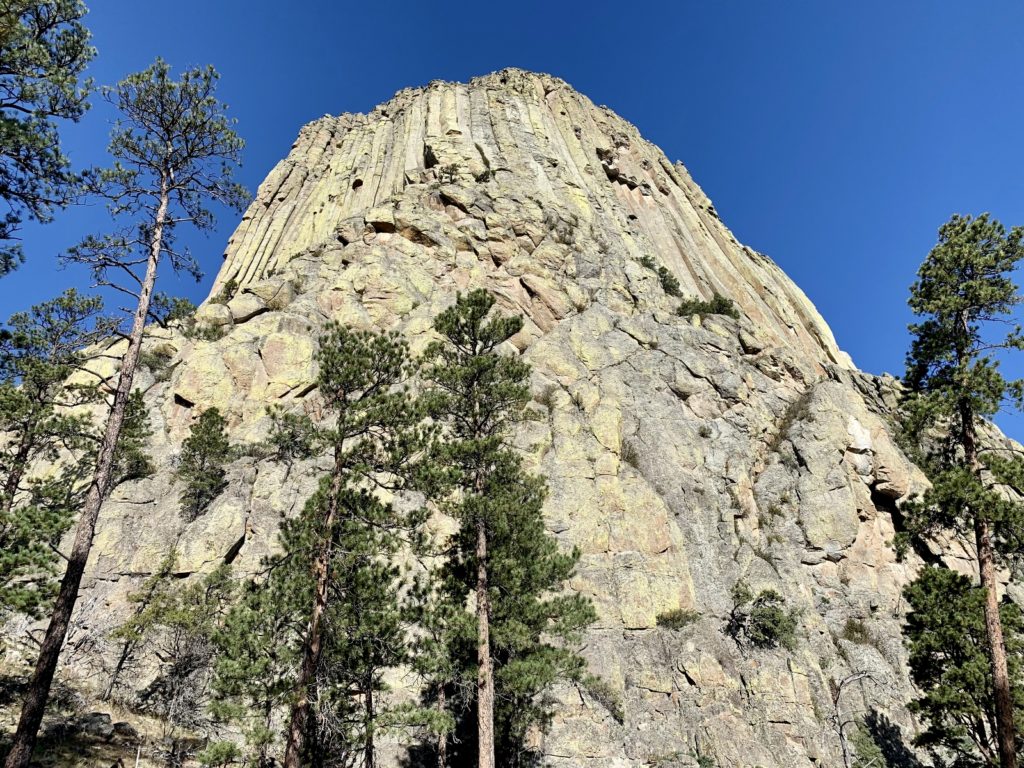
Camping & Services
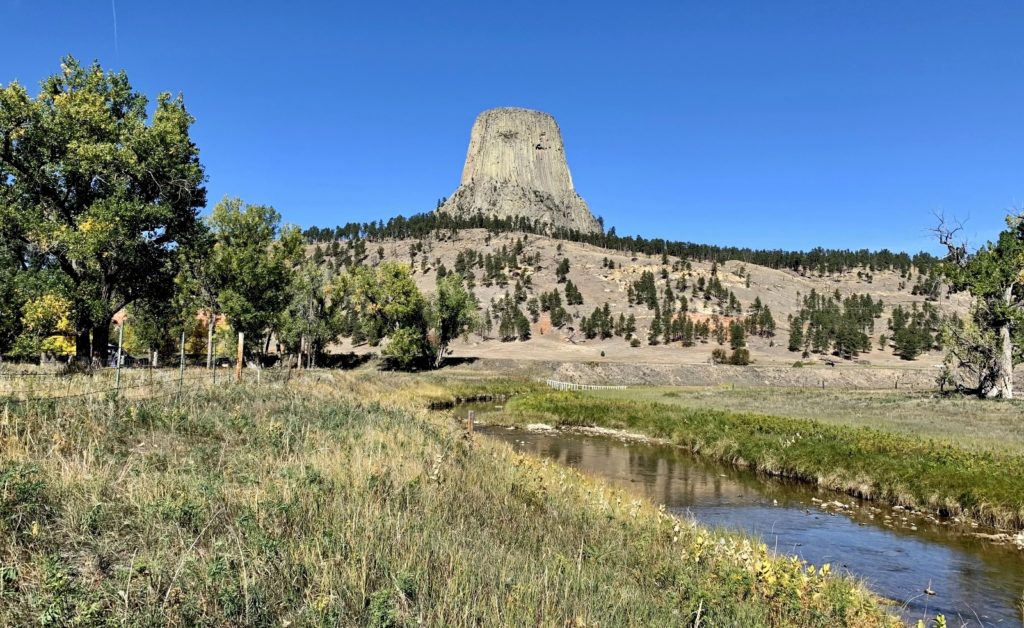
Moorcroft (33 miles away) and Sundance (27 miles away) are the closest full service communities to Devils Tower National Monument. The grocery store in Sundance had everything we needed for a small resupply. And just down the street, Cowgirl Pizza & Laundromat was a perfectly adequate spot to catch up on a few loads of laundry. Only half of their machines worked, but it served our needs. There are a couple of restaurants and a KOA just outside the park’s entrance booth, but generally speaking there isn’t a lot for services near the park. We tried eating at Devil’s Tower Gulch after a day of hiking, but they were closed despite it being a day/hours their sign said they were open.
Devil’s Tower National Monument does have a gem of a campground. Situated along the banks of its namesake river, the Belle Fourche River Campground is open seasonally from May 15 – October 15. This is a first come, first served campground with 46 sites including 4 accessible sites and 3 tent-only group sites. There are 43 pull-through sites with room for RVs up to 35 feet. The park recommends that vehicles towing trailers use B loop (we were able to navigate through A loop, but it was a bit tight). No hookups or dump are available. Drinking water is available at water spigots and in the restrooms. Cost is $20.00 per night.
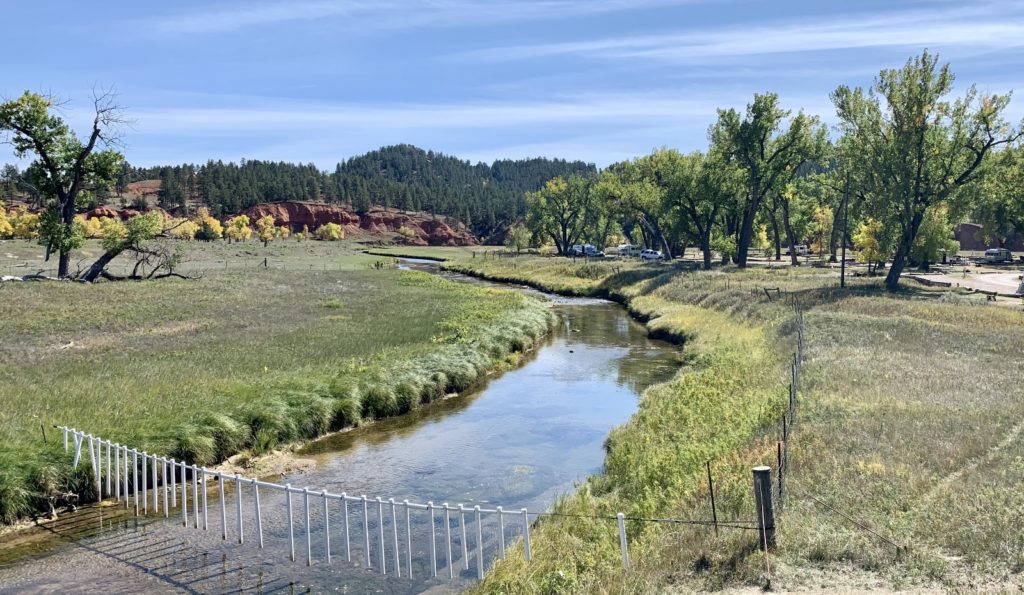
We loved our stay at the Belle Fourche River Campground. Belle Fourche (pronounced bell FOOSH) means ‘beautiful fork’ in French and we certainly agreed with that name. We had a great view of Devils Tower on one side and the meandering Belle Fourche River on the other. The park was full of massive cottonwood trees that provided nice shade most of the day (temperatures were well above average during our stay and got as high as 90 on our last day). The campground was nearly full each night, but it was a friendly crowd and we had no complaints other than the occasional barking dog. Most people came to see Devils Tower for the day, spent one night, and were gone the next morning. We enjoyed a longer stay and used the location as a basecamp for some sites in the northern Black Hills just across the border in South Dakota.
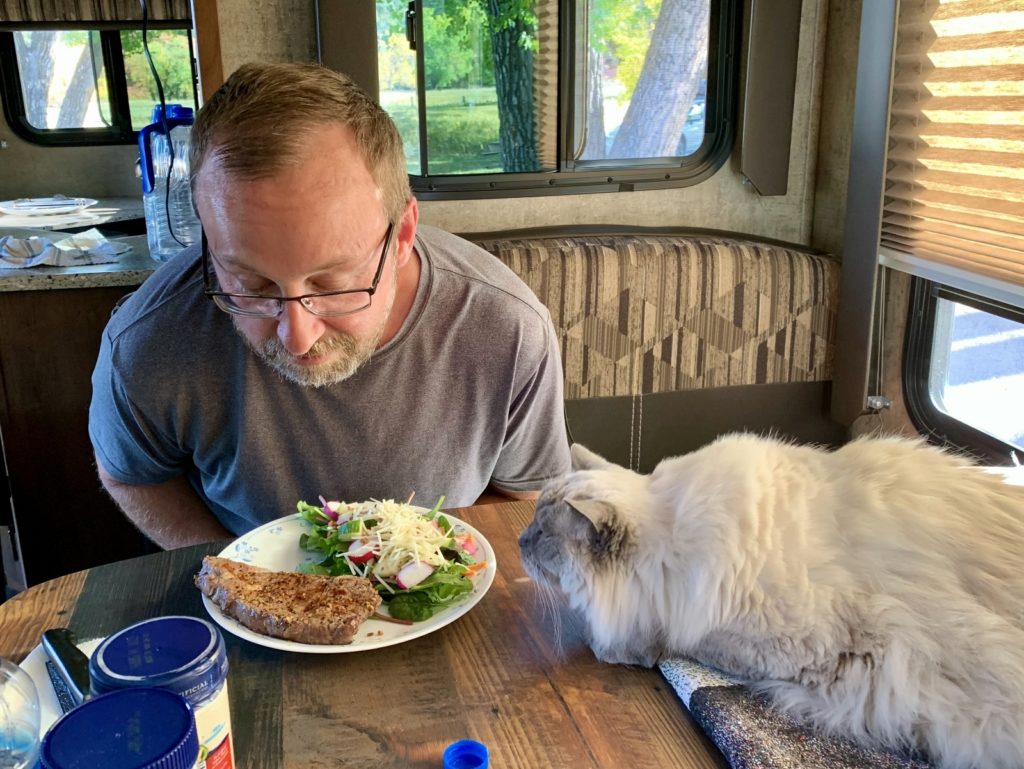
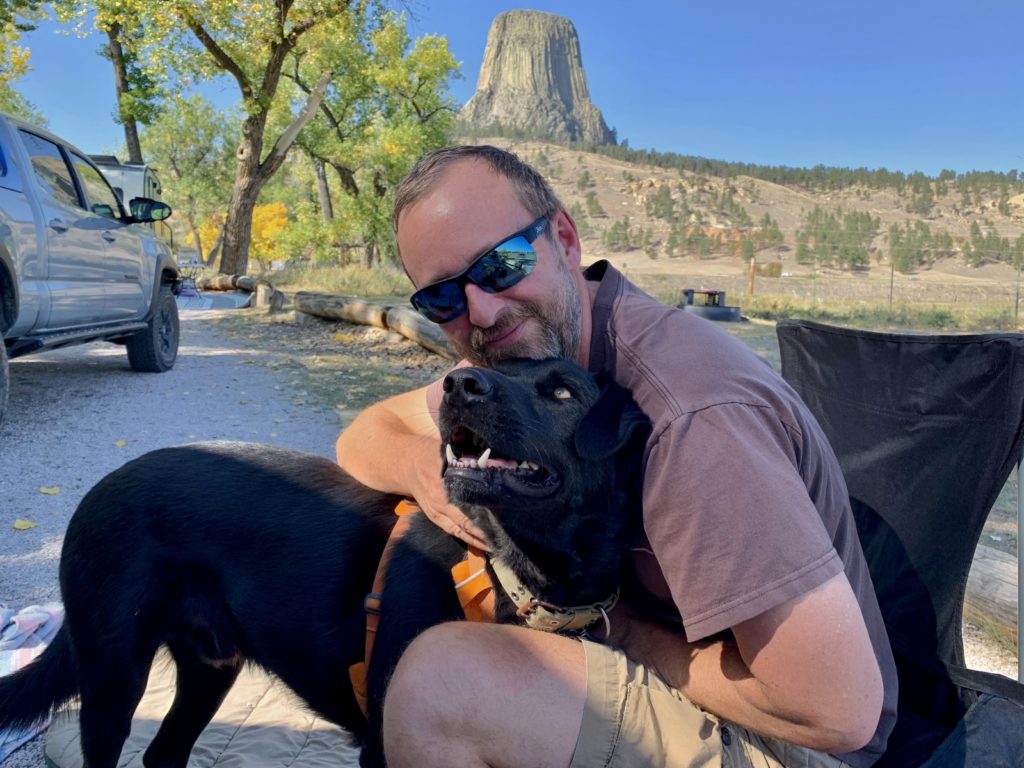
Things to Do
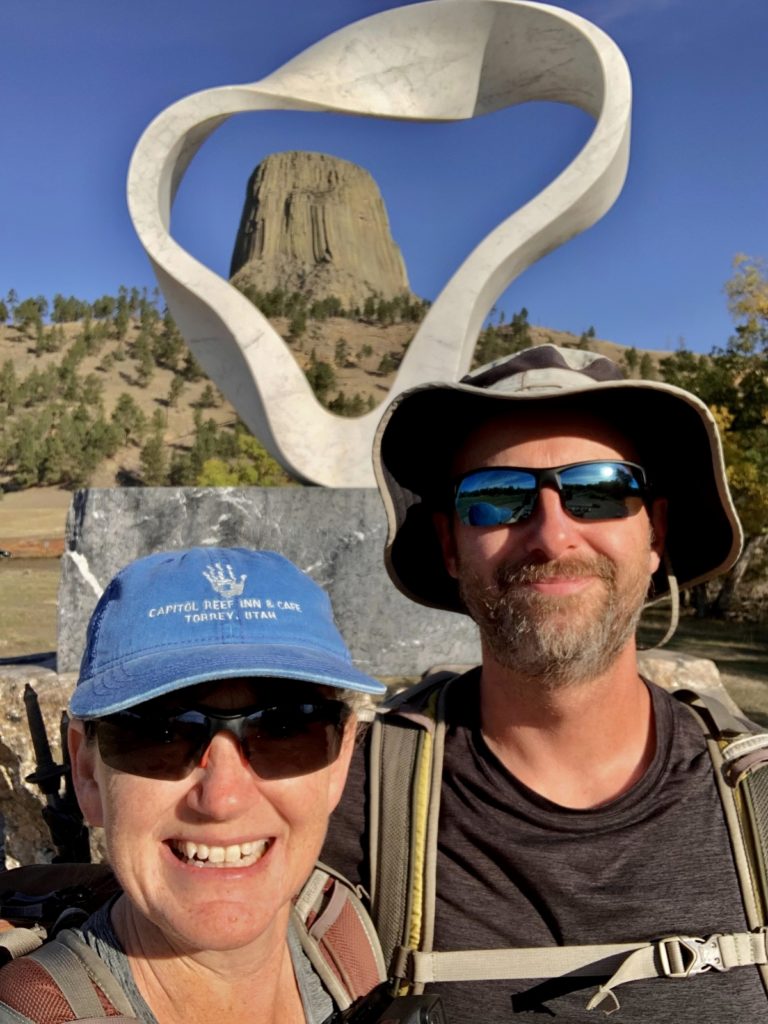
Devils Tower is one of the nation’s prime rock climbing destinations; however, most visitors are satisfied with seeing the big rock with two feet planted firmly on the ground. We were there to hike, enjoy the rich history, and to bag another destination in my quest to see all of the National Park Units.
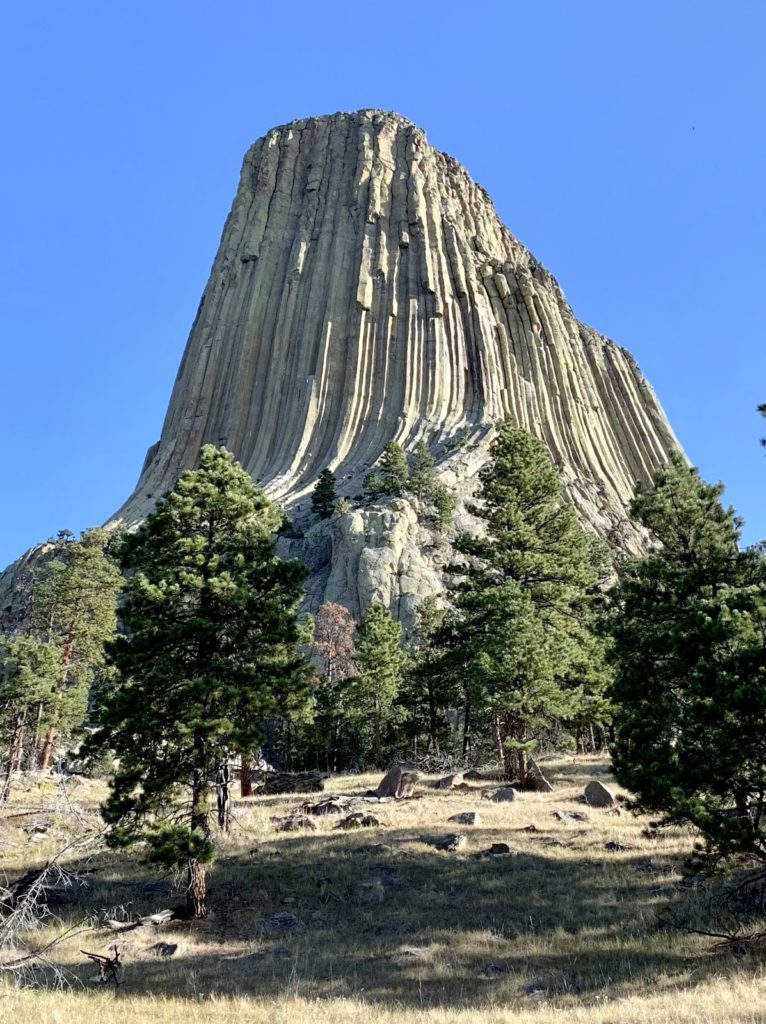
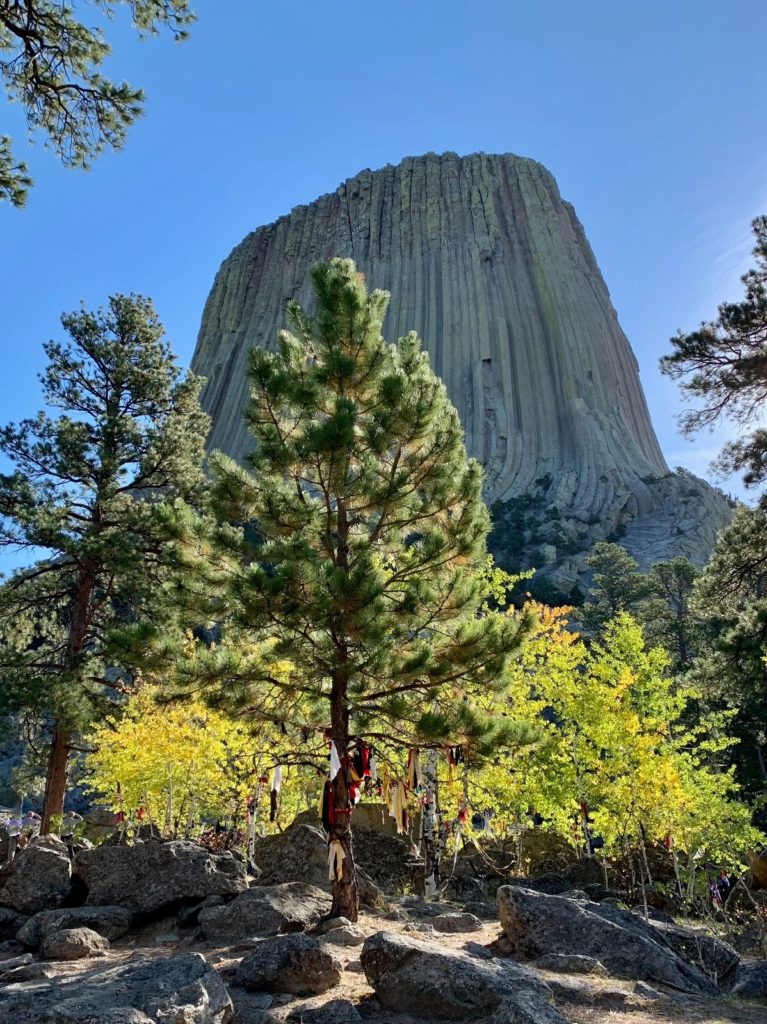
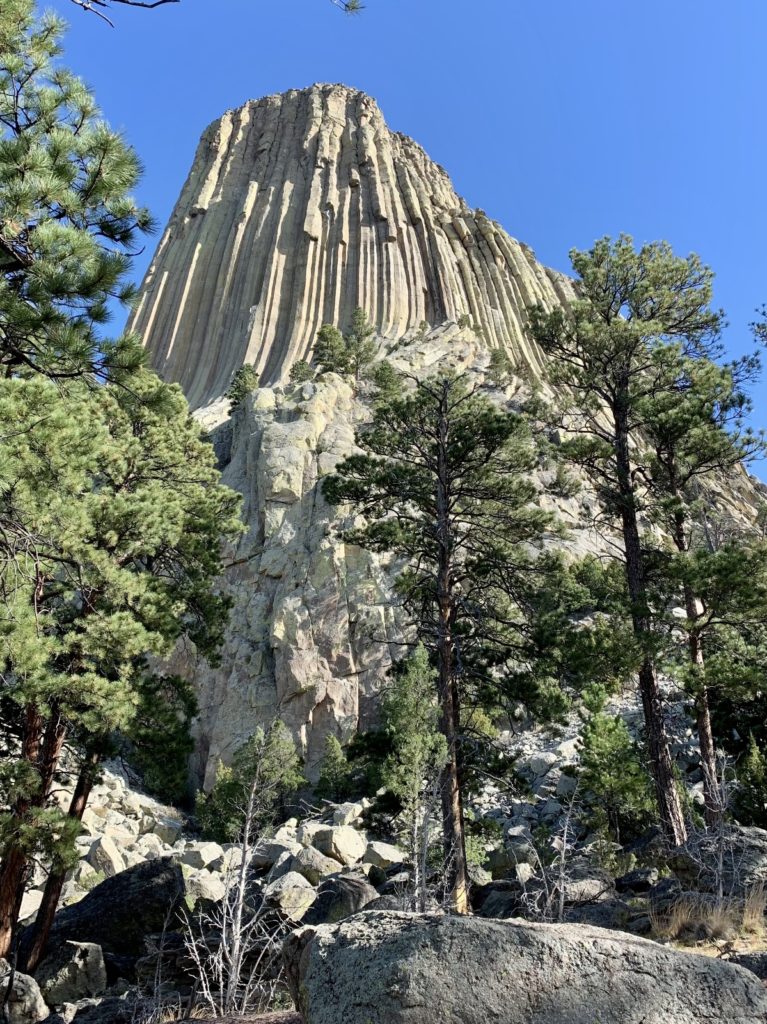
Devils Tower National Monument offers five short – moderate length trails, all of which offer excellent views of Devils Tower.
- Tower Trail: 1.3 mile paved loop trail around the base of the Tower. This is the closest you will get to the Tower without climbing it. Hands down, it is the most popular hike in the park and you will be joined by many other visitors. If you only have time for one trail, this is the one.
- Valley View Trail: this 0.6 mile trail connects the Red Beds Trail with the campground. It winds through a prairie dog town and offers fantastic views of the Belle Fourche River.
- South Side Trail: this 0.6 mile trail is another connector trail between the Red Beds Trail and the campground. It also take you through prairie dog town.
- Joyner Ridge Trail: this is a 1.5 mile loop along the north boundary of the park. It offers scenic views of Devils Tower and the surrounding prairie. This is the trail you hike for solitude.
- Red Beds Trail: this is a 2.8 mile loop that encircles the Tower. You are further from the base than on the Tower Trail, but the views are still stunning and you’ll see far fewer people.
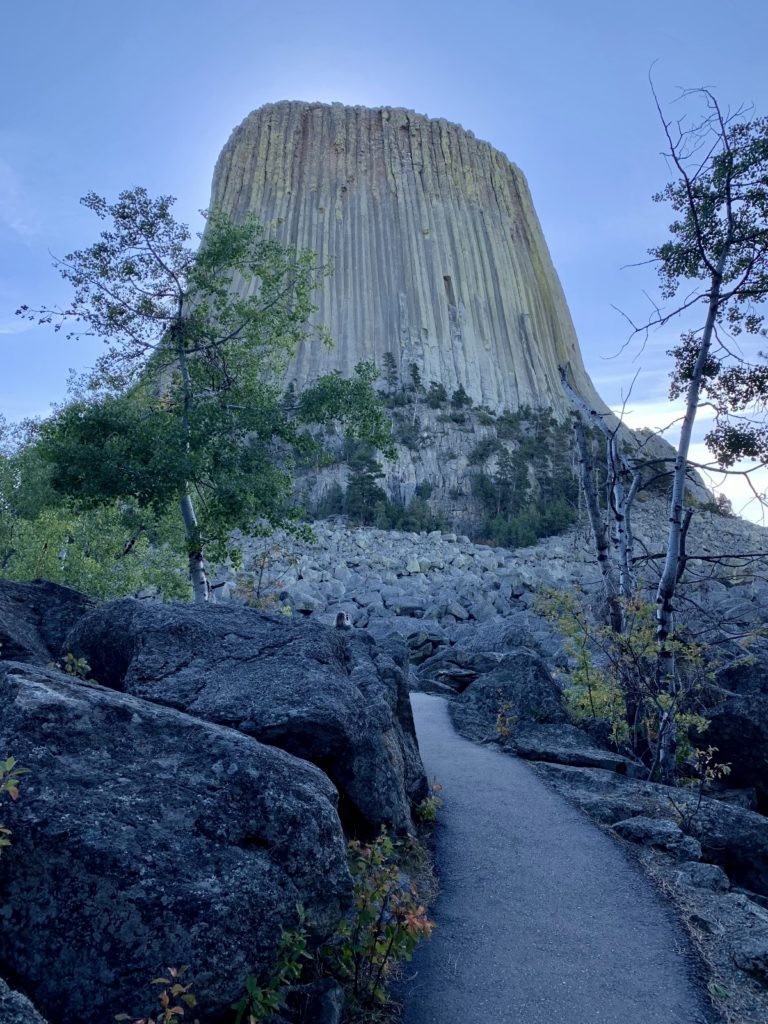
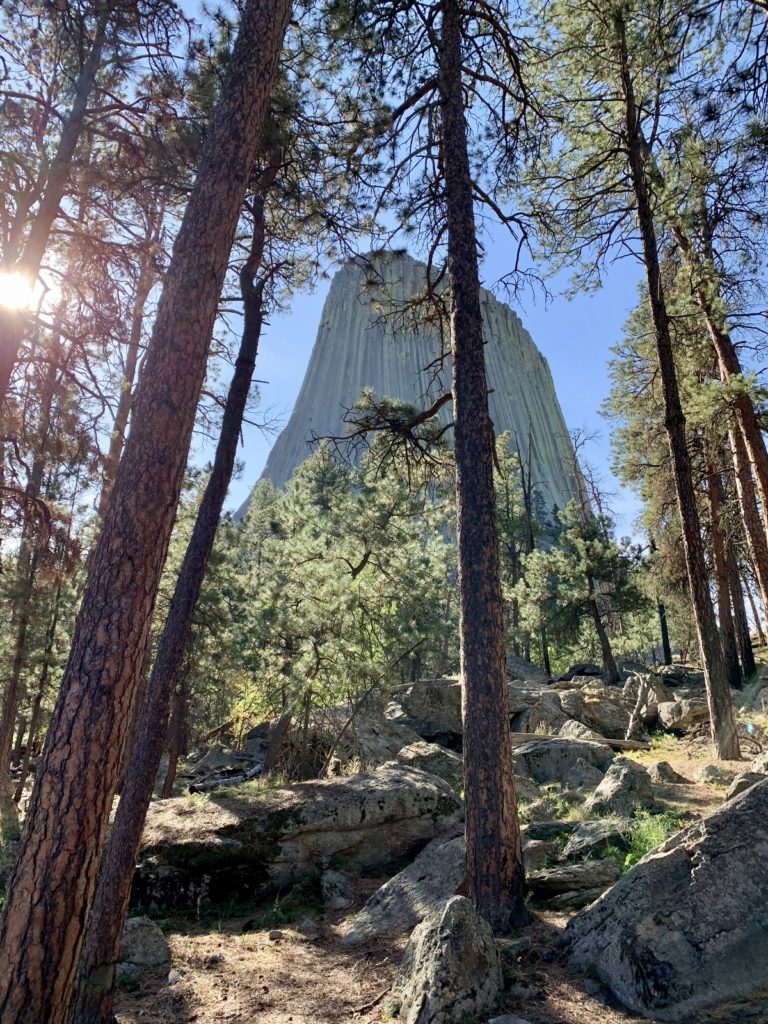
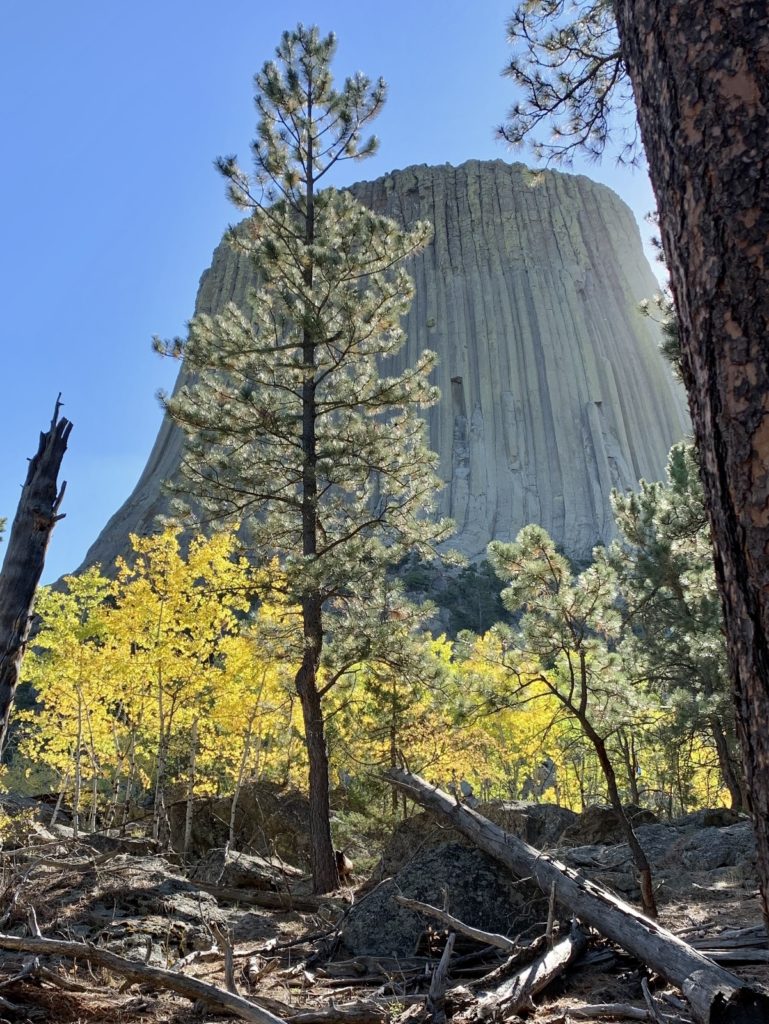
We combined all five of the trails to make a highly scenic 9.0 mile loop hike through the monument. We hiked from our campsite in Belle Fourche Campground up South Side Trail and took a left onto Red Beds Trail. We took that to the visitor center where we hung a right and enjoyed the Tower Trail. From there, we got back on Red Beds Trail and hiked over to complete the Joyner Ridge Loop. We then continued south on the Red Beds Trail to the Valley View Trail which took us back to the campground. If you have the time and the stamina, I highly suggest this same route. Once off the Tower Trail, we saw less than a dozen people and felt like we had the park to ourselves.
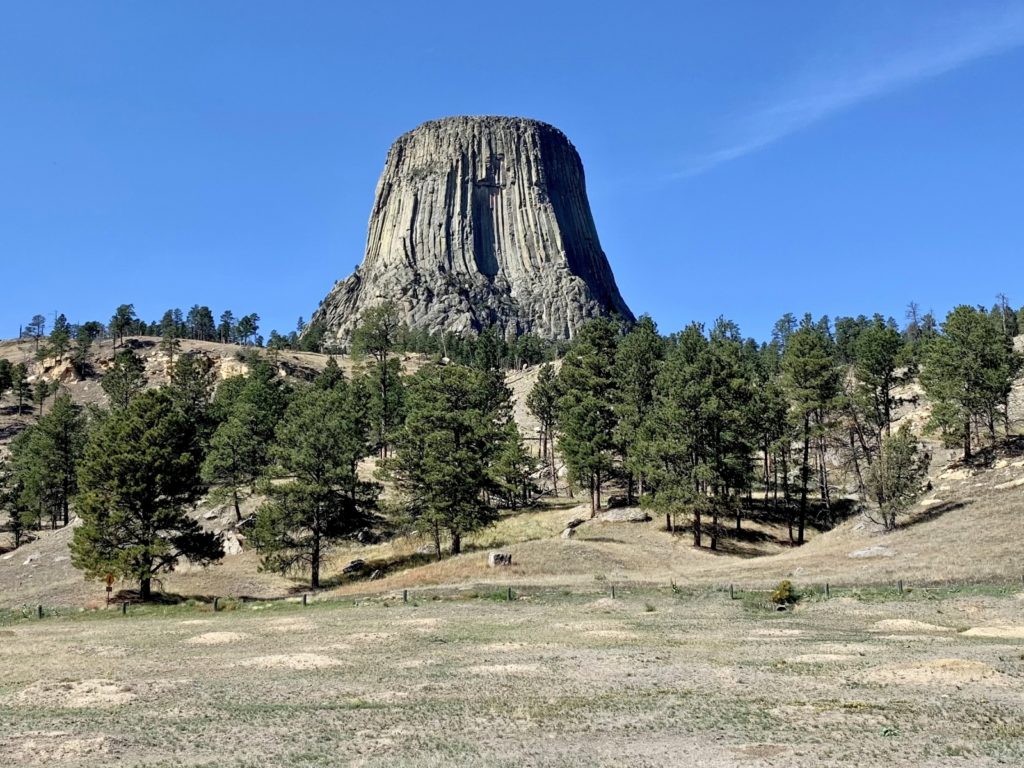
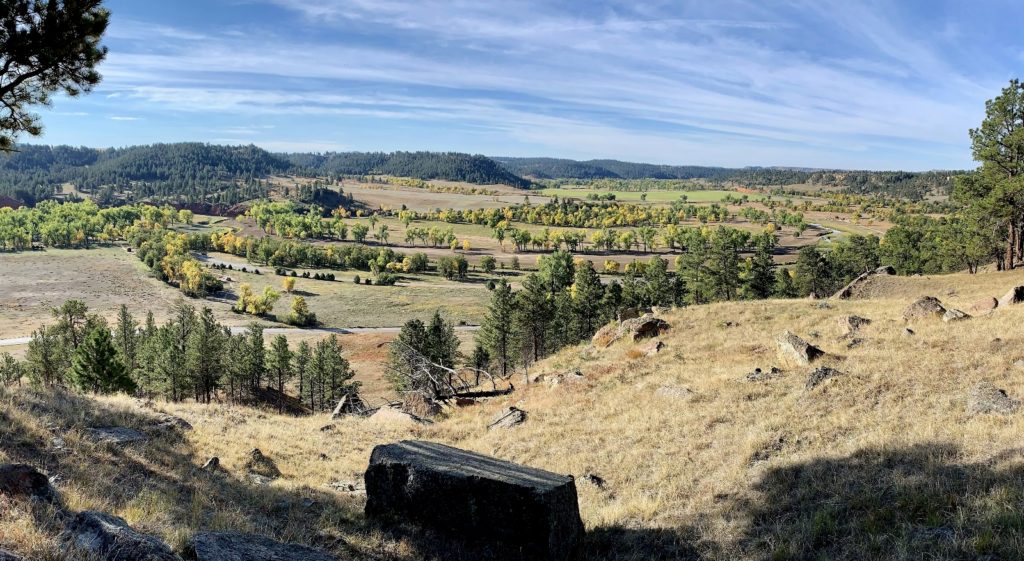
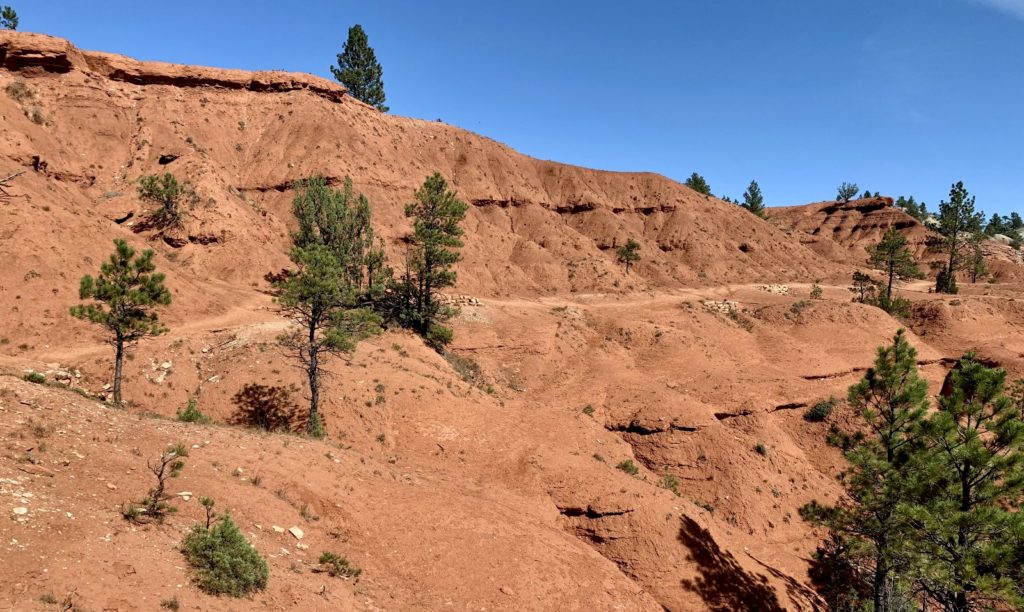
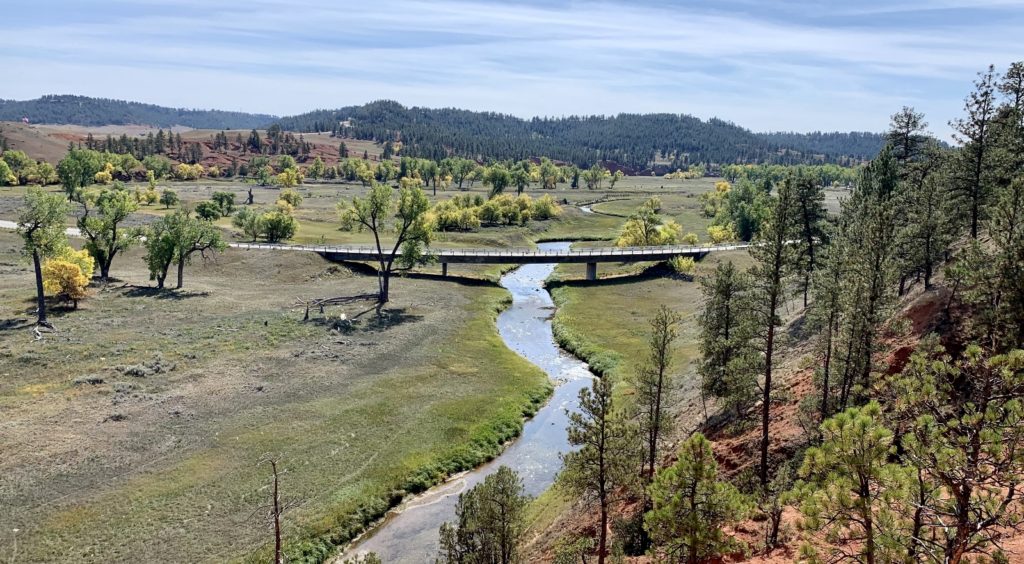
We were lucky enough to be camped at Devils Tower during their 2021 Bat Festival. The park is home to 11 different species of bats. Some species roost on the Tower while others prefer the boulder field and forests. Fictional movies have falsely created a negative reputation for bats, but they are critical to ecosystems world-wide. They control insect populations and are critical to the pollination of many plants. We enjoyed some nice educational displays and a very good ranger talk on White-nose Syndrome. I applaud the National Park Service’s efforts to educate the public about this devastating disease and the positive role bats play in our world.
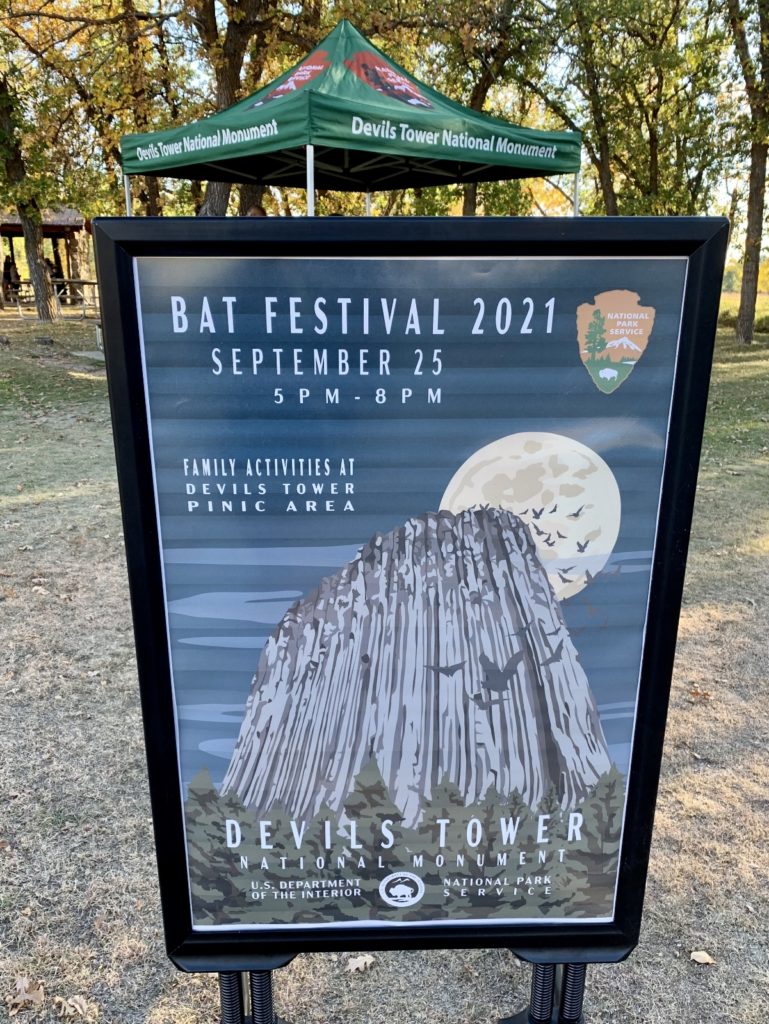
White-nose Syndrome (WNS) is a contagious fungal disease that affects hibernating bats and is devastating North American bat populations. The fungus spreads along the skin of susceptible species causing infected bats to abnormally rouse from their hibernation. This uses up their fat reserves and they go out in search of insects. With the lack of insects during winter months, the bats starve to death. Mortality rate of WNS is 90-100%. As of March 2021, WNS affects 12 species of bats in 35 U.S. states and has killed over 6 million bats in eastern North America alone. WNS was confirmed in the Black Hills in May 2018 and at Devils Tower in April of this year (2021).
How can each of us help slow the spread of White-nose Syndrome? Do not handle any bats, living or dead. If you come across a bat suspected of having WNS, contact wildlife authorities. If you have visited caves or mines suspected to contain WNS, follow appropriate decontamination protocols to prevent transmission of the disease. Some parks, like nearby Wind Cave National Park, require visitors to walk a length of bio-cleaning mat to remove spores and dirt after exiting affected caves.
Bear Lodge
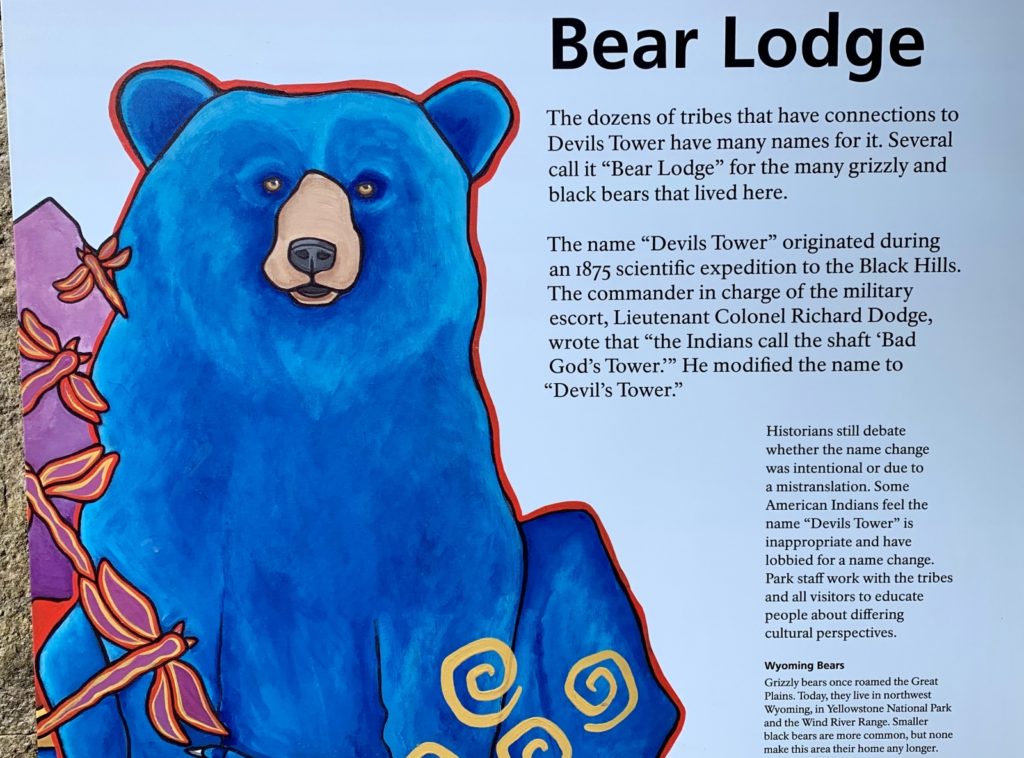
Devils Tower was known to Native Americans as Bear Lodge for the many grizzly and black bears that lived there. Maps from 1855 – early 1900s most commonly used this name. The name Devils Tower originated in the 1876 book of U.S.G.S. expedition commander Colonel Dodge who wrote, “the Indians call this shaft The Bad God’s Tower, a name adopted with proper modification by our surveyors.” Not a very ‘proper modification’ in my opinion. Regardless, Dodge’s book became very popular and the mistranslated name took hold in the public’s mind and was commonly adopted by the early 1900s.
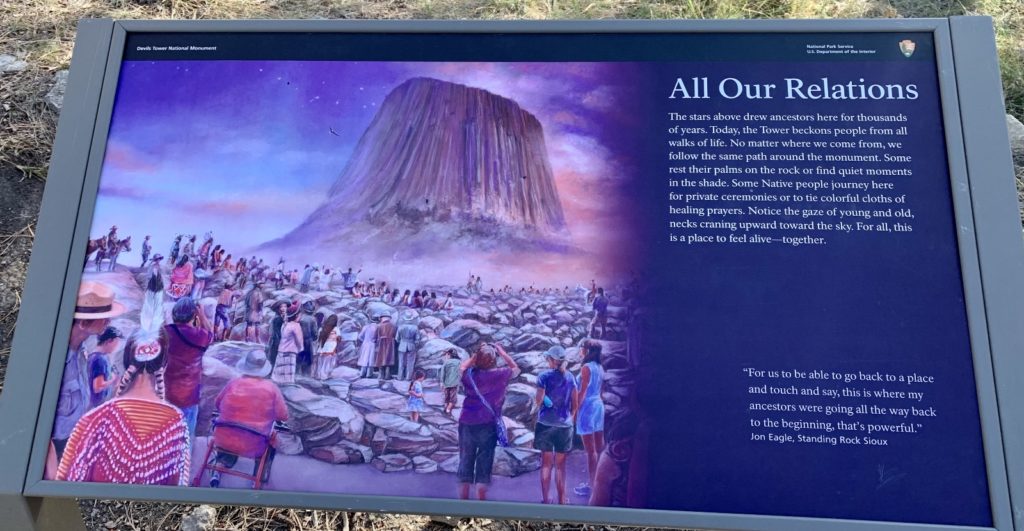
According to the National Park Service website, the issue of the Tower’s name is a source of controversy for many people. Almost all of the American Indian names for the Tower are associated with a bear. In the Lakota language, bad god or evil spirit is wakansica whereas the word for black bear is wahanksica – this fact suggests that Dodge’s party simply mistranslated the Indian name for the Tower. Recently, tribal organizations have lobbied for a change to the name of the Tower to Bear Lodge. The national park provides more information about the proposal to change the name for those interested to learn more.
Many tribes of the Great Plains and Black Hills had connections with the Bear’s Lodge area and those connections persist today for over two dozen tribes including the Lakota, Cheyenne, Shoshone, Arapaho, and Crow. Most tribes had oral histories about the creation of the monolith. While each story is unique in its details, they share similar elements and are fascinating to read. Click here to read a few of these rich narratives.
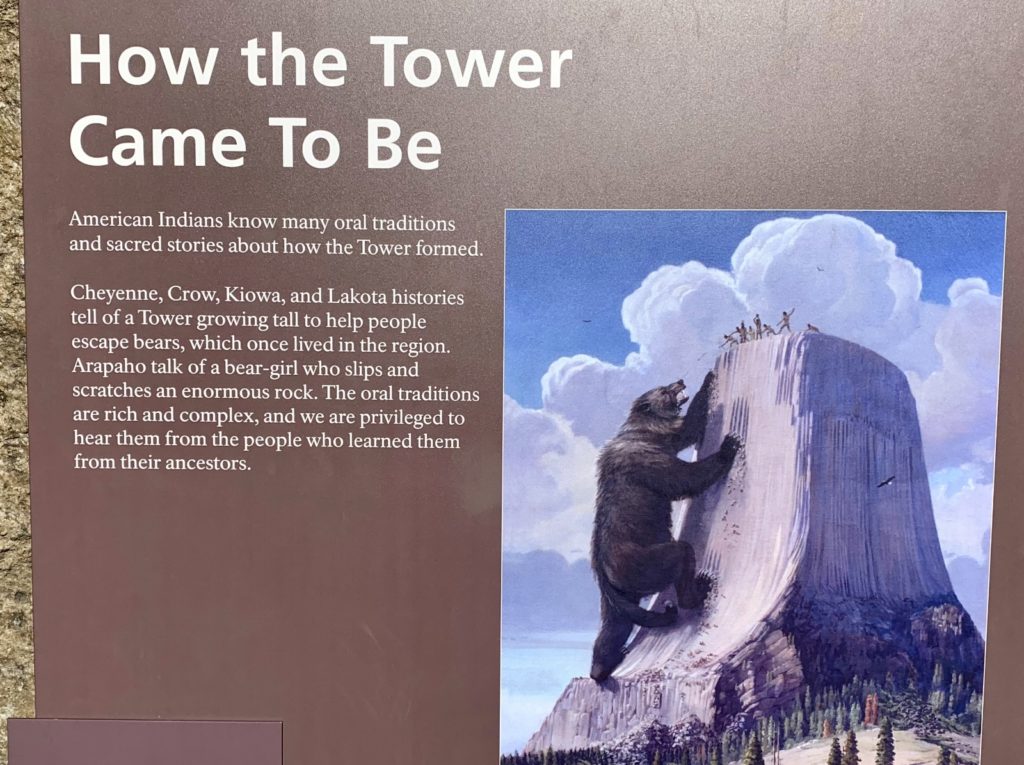
Many tribes continue to utilize Bear Lodge for traditional ceremonies. Sweat lodges, sun dances, and others are still practiced within the monument’s boundaries. A common sight while visiting the monument are prayer cloths and prayer bundles attached to trees, especially along the Tower Trail. They are similar to ceremonial objects from other religions, and may represent a person making an offering, a request, or simply in remembrance of a person or place. As with many religious ceremonies, they are private to the individual or group. Please do not touch, disturb or remove prayer cloths or other religious artifacts at the park.
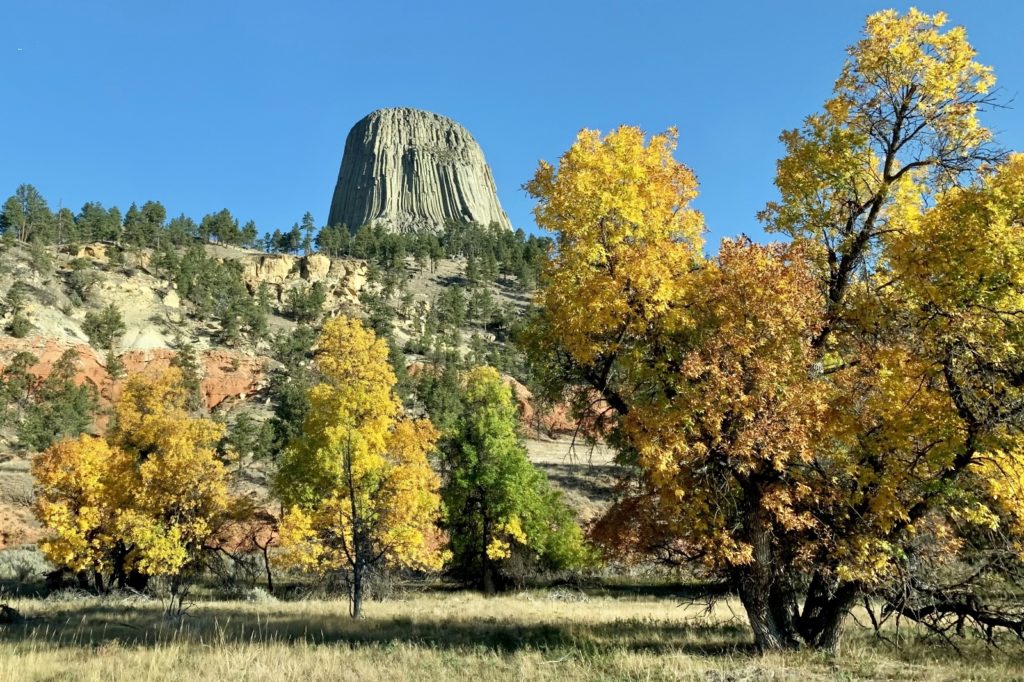
We very much enjoyed our five day stay at Devils Tower. We would have loved to stay and watch the cottonwoods in their colorful fall display, but there was more adventure ahead.
The Adventure Continues
Be sure to join us for our next post as we continue our journey east into the Black Hills of South Dakota. And don’t forget to check out our Amazon RV and Adventure Gear recommendations. We only post products that we use and that meet the Evans Outdoor Adventures seal of approval. By accessing Amazon through our links and making any purchase, you get Amazon’s every day low pricing and they share a little with us. This helps us maintain this website and is much appreciated!
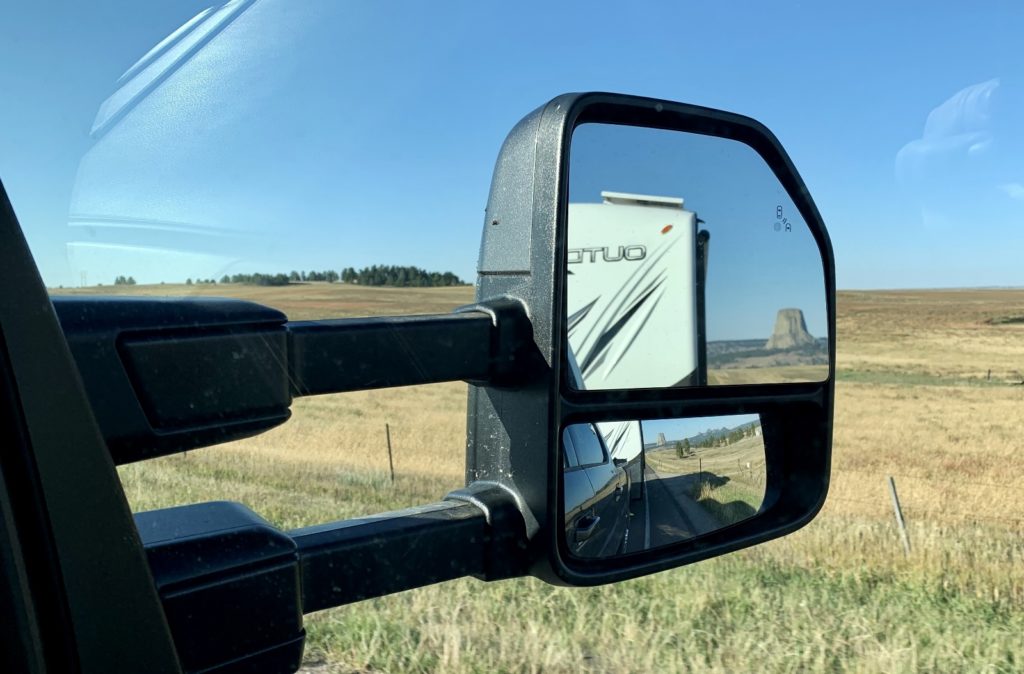
Another favorite memory relived thru your experience…..thank you!